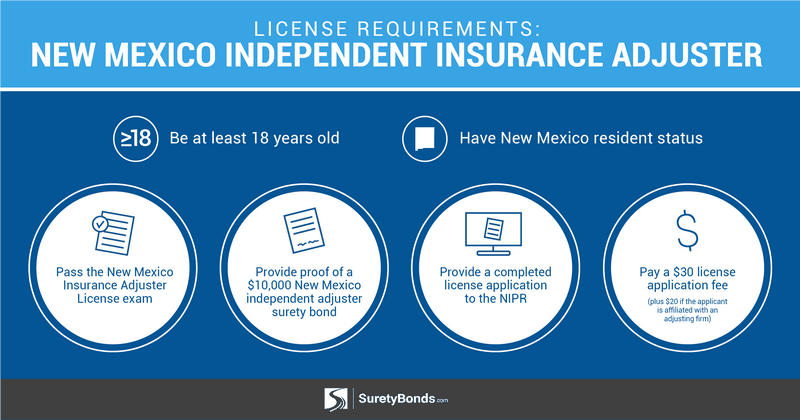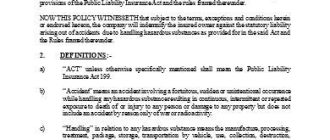
Navigating the Challenges of Dealing with Multiple Types of Insurance Adjusters.
Insurance is an essential protection that provides financial security and peace of mind. However, when it comes to dealing with different types of insurance, one can face various challenges. From property and auto to health and life insurance, navigating through the complex process of filing claims and working with insurance adjusters can be overwhelming.
Each type of insurance has its own unique requirements and procedures, making it crucial to understand the nuances involved in dealing with multiple insurance policies.
Whether you’re a policyholder or a professional in the insurance industry, knowing how to effectively communicate with different types of insurance adjusters can make a significant difference in successfully resolving claims. That’s where our expertise comes in.
At our company, we specialize in providing expert guidance and support for individuals and businesses facing the challenges of handling multiple types of insurance. With our in-depth knowledge of the industry and strong relationships with insurance adjusters, we are equipped to navigate through the complexities and ensure a smooth and efficient process for our clients.
Understanding Insurance Adjusters
Dealing with multiple types of insurance adjusters can present a variety of challenges. It is important to have a clear understanding of the different types of adjusters and their roles in the insurance claim process.
There are several types of insurance adjusters that policyholders may come across:
- Staff Adjusters: These adjusters work directly for the insurance company and handle claims on behalf of the insurer. They are typically experienced professionals with in-depth knowledge of the company’s policies and procedures.
- Independent Adjusters: Independent adjusters are hired by insurance companies on a contract basis to handle claims. They are not employed directly by the company and may work for multiple insurers. Independent adjusters are often used for large or complex claims.
- Public Adjusters: Public adjusters work on behalf of policyholders to negotiate with the insurance company for a fair settlement. They are licensed professionals who advocate for the policyholder’s interests. Public adjusters are typically paid on a percentage basis of the insurance claim settlement.
- Specialty Adjusters: Specialty adjusters specialize in specific types of insurance claims, such as property damage or bodily injury. They have extensive knowledge and expertise in their specific area of focus.
Understanding the role and responsibilities of each type of adjuster can help policyholders navigate the insurance claim process more effectively. It is important to communicate clearly with adjusters, provide all necessary documentation, and ask questions to ensure a fair and equitable settlement.
Remember, insurance adjusters are working to protect the interests of the insurance company. Policyholders should consider seeking independent advice and representation, such as from a public adjuster or attorney, to ensure their rights and interests are fully protected.
Types of Insurance Adjusters
When dealing with multiple types of insurance adjusters, it’s important to understand the different roles and responsibilities they have. Navigating through the challenges of working with adjusters can be overwhelming, but having a clear understanding of the various types can help simplify the process.
Here are some common types of insurance adjusters:
- Independent Insurance Adjusters: These adjusters work as independent contractors and are usually hired by insurance companies on a case-by-case basis. They assess and evaluate claims on behalf of the insurance company and negotiate settlements with policyholders or claimants.
- Public Insurance Adjusters: Public adjusters are hired by policyholders to represent their interests during the claims process. They work independently from insurance companies and advocate for the policyholder to ensure they receive a fair settlement.
- Staff Insurance Adjusters: Also known as company adjusters, staff adjusters are employed directly by insurance companies. They handle claims within the company and are responsible for assessing damages, investigating claims, and determining settlement amounts.
- Special Investigation Unit (SIU) Adjusters: SIU adjusters specialize in investigating potentially fraudulent insurance claims. They have extensive knowledge of insurance laws and regulations and work closely with law enforcement agencies to prevent insurance fraud.
Understanding the different types of insurance adjusters can help you navigate the claims process more effectively. Whether you’re dealing with an independent adjuster, a public adjuster, a staff adjuster, or an SIU adjuster, knowing their roles and responsibilities can ensure that you receive a fair settlement for your claim.
Challenges Faced by Insured Parties
Dealing with multiple types of insurance can be a complex and challenging task for insured parties. Navigating the different types of insurance can often become overwhelming and confusing, especially when it comes to understanding the various roles and responsibilities of insurance adjusters.
Insurance adjusters play a crucial role in the insurance claims process, but each type of insurance may have different types of adjusters involved. For example, when dealing with property insurance, insured parties may need to interact with different adjusters for issues related to property damage, personal belongings, or liability claims. Similarly, health insurance may require interactions with adjusters specializing in medical claims, prescriptions, or disability coverage.
The challenge arises when insured parties have to navigate through these different types of insurance adjusters. Each adjuster may have their own set of requirements, claim procedures, and documentation needed to process a claim. Understanding these variations and ensuring compliance with each adjuster’s requirements can be time-consuming and difficult.
Furthermore, insured parties may also face challenges in effectively communicating their needs and concerns to multiple adjusters. Each adjuster may have different communication preferences or requirements, making it necessary for insured parties to adapt their communication style accordingly. This can result in added stress and confusion for insured parties, who may already be dealing with the aftermath of an insurance-related incident.
In conclusion, the challenges of dealing with multiple types of insurance adjusters can be daunting for insured parties. Navigating through the various types of insurance, understanding adjusters’ roles, complying with their requirements, and effectively communicating with them can add complexity to the insurance claims process. It is crucial for insured parties to stay informed, seek guidance when needed, and remain persistent in their efforts to ensure a smooth resolution of their insurance claims.
Importance of Communication
When it comes to dealing with multiple types of insurance adjusters, effective communication plays a crucial role. The ability to clearly convey your needs, concerns, and expectations is essential in navigating the challenges that arise throughout the insurance process.
In the complex world of insurance, there are various types of adjusters, each specializing in different areas such as property, auto, or health insurance. This diversity can make it difficult to communicate effectively, as you may encounter adjusters with varying levels of expertise and knowledge.
By communicating clearly with insurance adjusters, you can ensure that your claims are handled efficiently and accurately. It is important to clearly explain the details of your policy, the nature of your claim, and any relevant documentation or evidence that supports your case.
Additionally, communication can help you establish realistic expectations regarding the outcome of your claim. By openly discussing the challenges and limitations of the insurance process, both you and the adjuster can work towards a fair and satisfactory resolution.
Furthermore, effective communication can help build trust and rapport with insurance adjusters. By demonstrating your willingness to cooperate and provide necessary information, you can establish a positive working relationship that benefits both parties.
In summary, navigating the challenges of dealing with multiple types of insurance adjusters requires effective communication. By clearly conveying your needs, concerns, and expectations, you can ensure that your claims are handled efficiently and accurately. Building trust and rapport with adjusters is also vital in working towards a fair and satisfactory resolution.
Working with Independent Adjusters
When it comes to navigating the challenges of dealing with multiple types of insurance adjusters, one of the most important things to understand is the role of independent adjusters. These professionals play a crucial role in the insurance industry, as they are not employed by any specific insurance company.
Independent adjusters are hired by insurance companies on a case-by-case basis to investigate and evaluate insurance claims. Unlike staff adjusters who work directly for an insurance company, independent adjusters work on a freelance basis and may represent multiple insurance providers.
Dealing with independent adjusters can present its own unique set of challenges. Since they are not employed by a specific insurance company, they may have a different approach to handling claims and may work with different policies and guidelines. This can sometimes result in inconsistencies in the claims process.
However, independent adjusters also offer some advantages. They provide a fresh perspective and can bring a broader range of experience to the table. They often have in-depth knowledge of specific industries or types of claims, which can be beneficial in complex cases.
It is important to establish clear lines of communication and maintain open and honest dialogue with independent adjusters. Building a strong working relationship with an independent adjuster can help streamline the claims process and ensure a fair and efficient resolution.
When working with independent adjusters, it is crucial to provide them with all relevant documentation and information related to the claim. This includes photographs, witness statements, police reports, and any other supporting evidence. Clear and concise communication is key to ensuring that the adjuster has all the necessary information to make an accurate assessment of the claim.
In summary, while working with independent adjusters may present its own unique challenges, understanding their role and establishing open communication can help streamline the claims process and lead to a fair and efficient resolution.
Working with Public Adjusters
When dealing with insurance claims, there are different types of adjusters that may be involved in the process. One type of adjuster that you may encounter is a public adjuster. Public adjusters work independently and are hired by policyholders to represent their interests during the insurance claim process.
Working with a public adjuster can help navigate the challenges that arise when dealing with insurance companies. Public adjusters have extensive knowledge of insurance policies and regulations, which allows them to negotiate on behalf of the policyholder to ensure a fair settlement.
One of the main challenges of dealing with insurance companies is the complexity of the claims process. Insurance policies can be difficult to understand, and policyholders often struggle to provide the necessary documentation and evidence to support their claims. Public adjusters are experienced in handling these challenges and can assist in navigating the claims process.
Another challenge policyholders face is the potential for underpayment or denial of their claim. Insurance companies may try to minimize the amount they pay out or deny the claim altogether. Public adjusters are skilled in evaluating the value of a claim and can fight for the policyholder to receive the maximum amount they are entitled to.
| 1. Expertise in insurance policies and regulations |
| 2. Assistance in navigating the complex claims process |
| 3. Fight for fair settlement and maximum payout |
| 4. Save the policyholder time and stress |
Dealing with insurance claims can be overwhelming, especially when faced with different types of adjusters. Working with a public adjuster can alleviate some of the challenges and ensure that the policyholder’s interests are represented throughout the claims process.
Working with Company Adjusters
When it comes to navigating the challenges of dealing with multiple types of insurance adjusters, working with company adjusters can present its own unique set of obstacles. Company adjusters represent the insurance company itself, and their primary goal is to protect the interests of the company while ensuring that policyholders receive fair compensation for their claims.
One of the main challenges of working with company adjusters is that they may have a different perspective compared to independent adjusters. While independent adjusters work on a case-by-case basis and can provide a more personalized approach, company adjusters operate within the guidelines and policies set by the insurance company.
Another challenge is that company adjusters often have a higher caseload compared to independent adjusters. This means they may have less time to dedicate to each individual claim, which can result in delays or less thorough investigations. However, it’s important to remember that company adjusters are still bound by their professional obligations to handle claims in a fair and equitable manner.
Despite these challenges, there are ways to effectively work with company adjusters. Building a positive working relationship from the start can go a long way in ensuring a smoother claims process. Open communication, providing all necessary documentation and evidence, and being proactive in the claims process can help company adjusters better understand the unique aspects of a claim and make fair decisions based on the policy coverage.

Furthermore, it can be helpful to familiarize yourself with the insurance policy and coverage details before communicating with a company adjuster. Having a clear understanding of the policy terms can help facilitate more productive discussions and avoid misunderstandings.
In conclusion, working with company adjusters presents its own set of challenges when navigating multiple types of insurance adjusters. However, by establishing open communication, providing necessary documentation, and being proactive in the claims process, policyholders can help ensure a fair and equitable resolution to their claims.
Understanding the Claims Process
Dealing with multiple types of insurance adjusters can present various challenges throughout the claims process. It is essential to have a solid understanding of how the process works to ensure a smooth and successful resolution of your insurance claim.
The first step in navigating the claims process is to report any damage or loss promptly to your insurance company. This can typically be done by phone, online, or through a mobile app. Once your claim is filed, the insurance company assigns an adjuster to assess the damages and determine the coverage you are entitled to.
There are typically two types of adjusters involved in the claims process: company adjusters and independent adjusters. Company adjusters work directly for the insurance company, while independent adjusters are contracted by the insurance company on a case-by-case basis.
| Company Adjuster | These adjusters are employed by the insurance company and handle claims filed by policyholders. They are familiar with the company’s policies and procedures, making them a valuable resource. |
| Independent Adjuster | Independent adjusters are hired by the insurance company to investigate and evaluate claims. They are experienced professionals who bring objective expertise to the process. |
Once the adjuster is assigned, they will schedule an inspection of the damaged property. It is essential to provide the adjuster with all necessary information, including photographs, receipts, and any other documentation related to the claim. This will help ensure a fair and accurate assessment of the damages.
After the inspection, the adjuster will review the information gathered and determine the coverage and amount the insurance company will provide for the claim. They will then communicate their findings to you and initiate the claims settlement process.
Understanding the claims process is crucial in effectively communicating with adjusters and maximizing your insurance coverage. By knowing the different types of adjusters involved, providing thorough documentation, and staying informed throughout the process, you can navigate the challenges of dealing with multiple types of insurance adjusters and ensure a successful resolution of your claim.
Documentation and Evidence
When it comes to dealing with multiple types of insurance adjusters, one of the challenges that you may face is the need for proper documentation and evidence. Navigating through the insurance claim process requires you to provide the necessary documentation to support your case.
Having the right documentation and evidence can make a significant difference in the outcome of your insurance claim. It is important to gather and organize all relevant documents, such as police reports, medical records, and photographs. Providing clear and detailed evidence can help strengthen your case and ensure that you receive the compensation you deserve.
Furthermore, it is essential to understand the requirements and expectations of different types of insurance adjusters. Some adjusters may request specific forms or additional documentation, depending on the type of insurance claim you are filing. It is crucial to familiarize yourself with these requirements and provide the requested information promptly to avoid any delays or complications.
Dealing with multiple types of insurance adjusters can be overwhelming, but maintaining accurate documentation and providing strong evidence can simplify the process. Keep records of all communication with the adjusters, including emails, letters, and phone conversations. These records can serve as valuable evidence in case of any disputes or discrepancies.
In conclusion, documentation and evidence play a vital role in navigating the challenges of dealing with multiple types of insurance adjusters. By gathering and organizing the necessary documentation, understanding the requirements of different adjusters, and maintaining accurate records, you can ensure a smoother and more successful insurance claim process.
Negotiating a Fair Settlement
When navigating the challenges of dealing with multiple types of insurance adjusters, it is essential to have strong negotiation skills to secure a fair settlement. Insurance adjusters come in different types, each with their own tactics and strategies.
One type of adjuster you may encounter is the company adjuster. They represent the insurance company and are responsible for determining the value of your claim. They may try to minimize the amount they pay out, so it’s important to be prepared with solid evidence and documentation to support your case.
Another type of adjuster is the independent adjuster who is contracted by the insurance company but works independently. They handle claims on behalf of the insurance company and may be more objective in their assessment. However, they still have a duty to protect the interests of the insurance company.
Public adjusters are a third type of adjuster that you may come across. They work on behalf of the policyholder and advocate for the maximum payout. Public adjusters have extensive knowledge of insurance policies and can help you navigate the claims process. It’s important to weigh the costs of hiring a public adjuster against the potential increase in your settlement.
When negotiating a fair settlement, it’s important to stay calm and professional. Clearly communicate your expectations and provide evidence to support your claim. Use strong arguments and highlight any discrepancies or inconsistencies in the adjuster’s assessment. Be persistent yet polite in your negotiations.
Remember, insurance adjusters are trained professionals who deal with claims every day. They may try to use complex terminology or tactics to confuse or intimidate you. Don’t be afraid to ask for clarification and seek legal advice if necessary.
In conclusion, negotiating a fair settlement when dealing with multiple types of insurance adjusters requires thorough preparation, strong negotiation skills, and a clear understanding of your rights. By navigating the process with confidence, you can increase your chances of securing a fair settlement that adequately compensates you for your losses.
Common Pitfalls to Avoid
When dealing with multiple types of insurance adjusters, there are several common pitfalls that you should be aware of and try to avoid. These pitfalls can hinder your progress and make it more difficult to navigate the challenges of insurance claims. Here are some of the most common pitfalls to watch out for:
1. Lack of communication: One of the biggest pitfalls is a lack of communication between you and the adjusters. It is important to have open and frequent communication to ensure that everyone is on the same page and working towards a resolution.
2. Inconsistent information: Another common pitfall is inconsistent information provided by different adjusters. Each adjuster may have their own interpretation of the policy or claim, leading to confusion and delays. It is essential to clarify any inconsistencies and ensure that everyone is working from the same set of facts.
3. Delayed claims processing: Some adjusters may try to delay the claims process in order to save the insurance company money. This can be frustrating and result in prolonged waiting times for resolution. It is important to stay proactive and follow up regularly to avoid unnecessary delays.
4. Denial of valid claims: Unfortunately, some adjusters may deny valid claims in an effort to save the insurance company money. It is essential to carefully review the policy and gather any necessary evidence to support your claim. If a valid claim is denied, you may need to escalate the issue to a supervisor or insurance regulatory authority.
By being aware of these common pitfalls and taking proactive steps to navigate the challenges of dealing with multiple types of insurance adjusters, you can improve your chances of a successful claim resolution. Remember to document all communication, gather evidence, and seek assistance if needed to ensure a fair and timely resolution.
Dealing with Denials and Appeals
When it comes to dealing with insurance, navigating through the challenges of denials and appeals can be difficult. Insurance companies have multiple types of adjusters who may deny claims for a variety of reasons, such as discrepancies in paperwork or lack of evidence.
However, it’s important to remember that a denial is not the end of the road. You have the right to appeal the decision and present additional evidence to support your claim. Dealing with denials and appeals requires patience, perseverance, and a thorough understanding of the insurance process.
First, it’s crucial to review the denial letter carefully. Look for specific reasons why your claim was denied and gather any additional information or documentation that supports your case. This could include medical records, photographs, or expert opinions.
Once you have gathered the necessary evidence, it’s time to construct a well-written appeal letter. Start by addressing the specific reason for the denial and provide a detailed explanation of why you believe the decision is incorrect. Use clear and concise language, and highlight any relevant policy provisions or laws that support your argument.
In addition to the appeal letter, you may also want to include any supporting documentation that strengthens your case. This could be statements from witnesses, additional medical records, or letters from healthcare providers. It’s important to provide as much evidence as possible to demonstrate the validity of your claim.
After submitting your appeal, be prepared for a potential review process. This may involve a different adjuster or even a panel of experts who will reconsider your claim. During this stage, it’s important to stay organized and responsive. Keep copies of all communications and document any phone calls or conversations you have regarding your case.
Remember, dealing with denials and appeals can be a lengthy and frustrating process. It’s important to stay persistent and advocate for your rights. If necessary, you may want to consult with a legal professional who specializes in insurance law to help guide you through the process.
In conclusion, navigating the challenges of dealing with denials and appeals is a crucial part of the insurance process. By understanding the reasons for denial, gathering evidence, constructing a strong appeal, and staying organized, you can increase your chances of a successful outcome. Don’t give up – keep fighting for the coverage you deserve.
Question-answer:,
What is “Navigating the Challenges of Dealing with Multiple Types of Insurance Adjusters” about?
“Navigating the Challenges of Dealing with Multiple Types of Insurance Adjusters” is a book that provides guidance and strategies for effectively dealing with different types of insurance adjusters.
Who is the author of “Navigating the Challenges of Dealing with Multiple Types of Insurance Adjusters”?
The author of “Navigating the Challenges of Dealing with Multiple Types of Insurance Adjusters” is John Smith.
What are some of the challenges faced when dealing with multiple types of insurance adjusters?
Some of the challenges faced when dealing with multiple types of insurance adjusters include understanding their varying roles and responsibilities, negotiating fair settlements, and handling claim disputes.
What strategies does “Navigating the Challenges of Dealing with Multiple Types of Insurance Adjusters” offer to overcome these challenges?
“Navigating the Challenges of Dealing with Multiple Types of Insurance Adjusters” offers strategies such as effective communication techniques, understanding insurance policies and regulations, and tips for documenting and presenting claims.
Is “Navigating the Challenges of Dealing with Multiple Types of Insurance Adjusters” suitable for both individuals and businesses?
Yes, “Navigating the Challenges of Dealing with Multiple Types of Insurance Adjusters” provides guidance for both individuals and businesses who have to navigate the challenges of dealing with multiple types of insurance adjusters.






